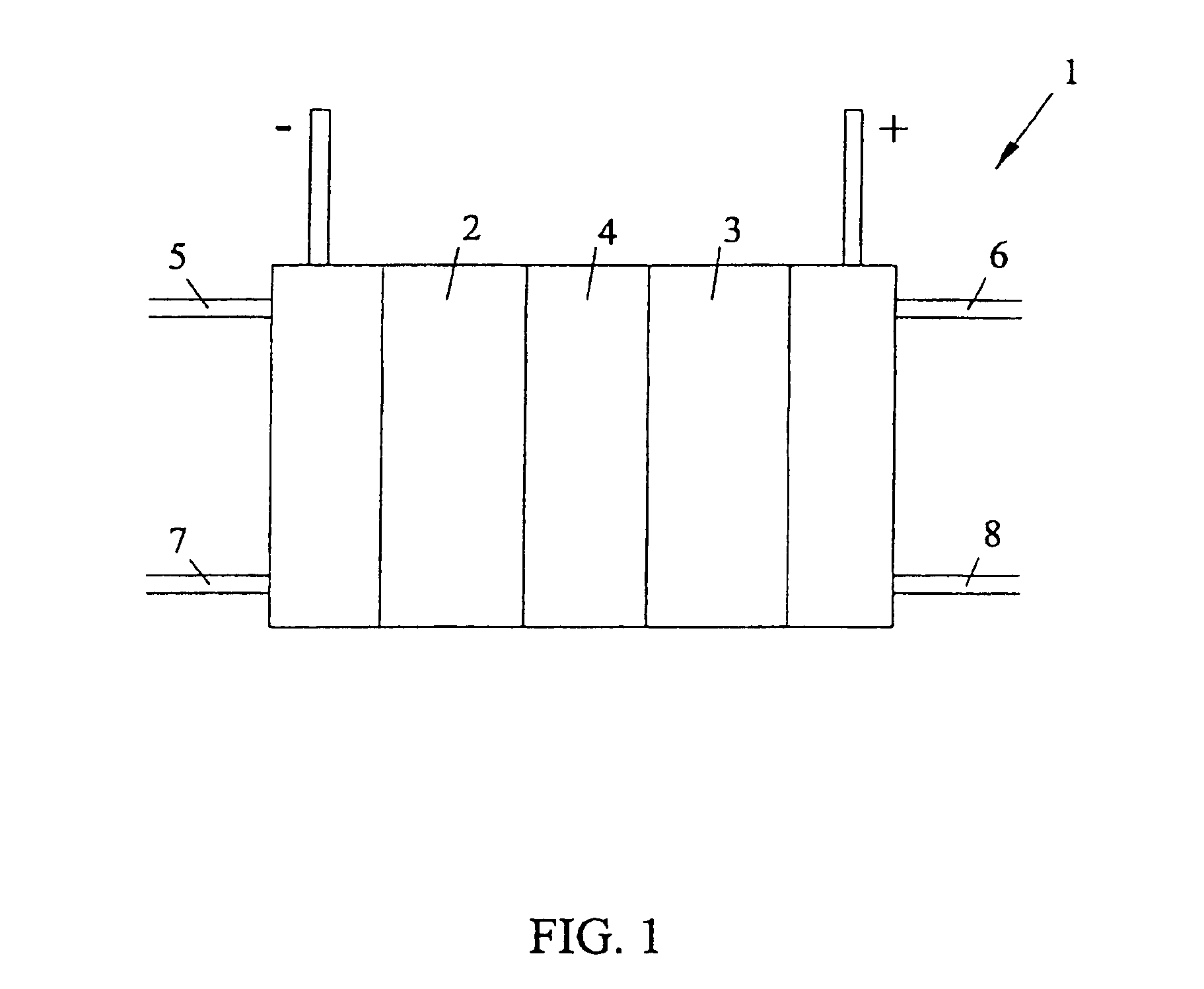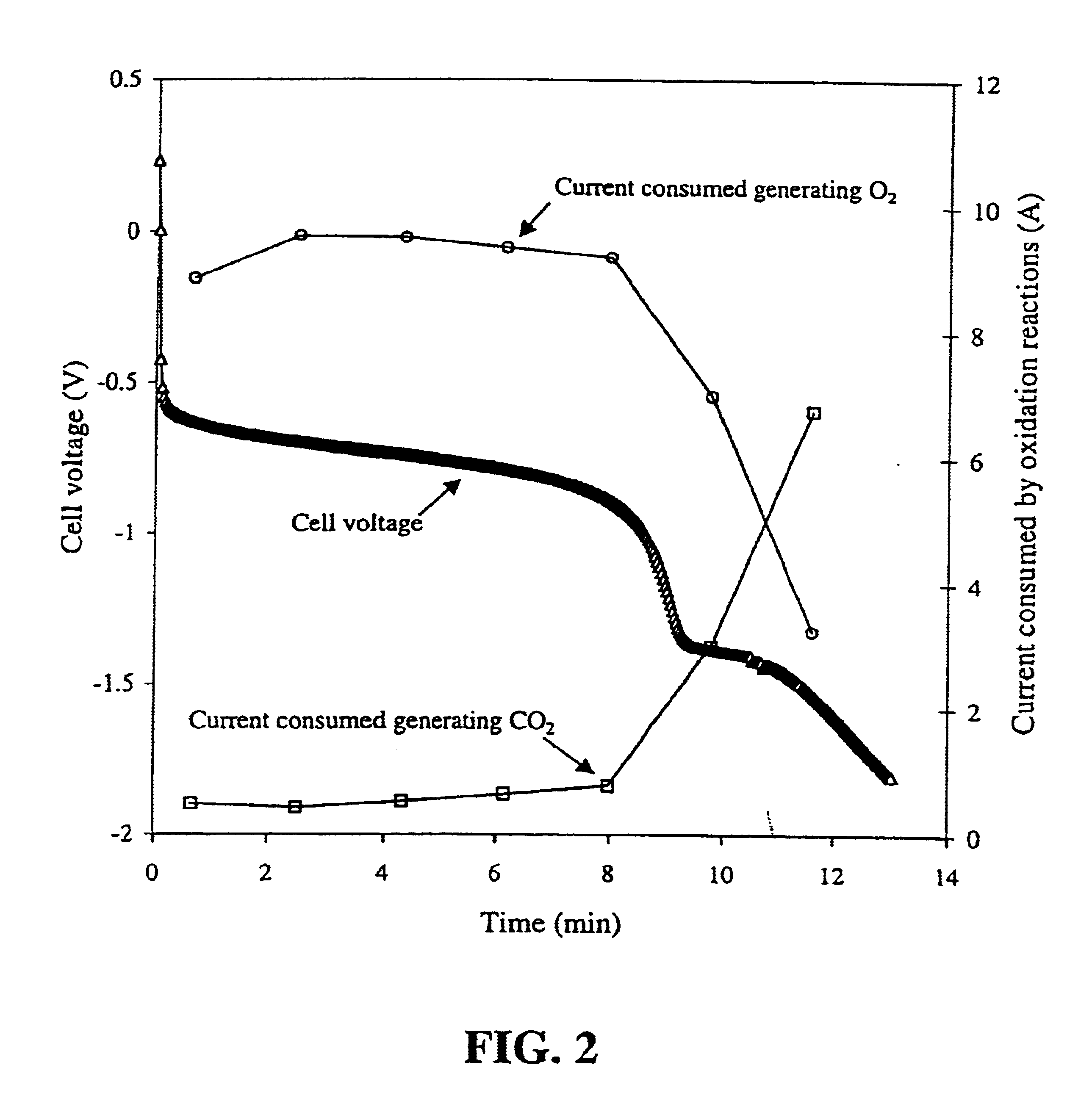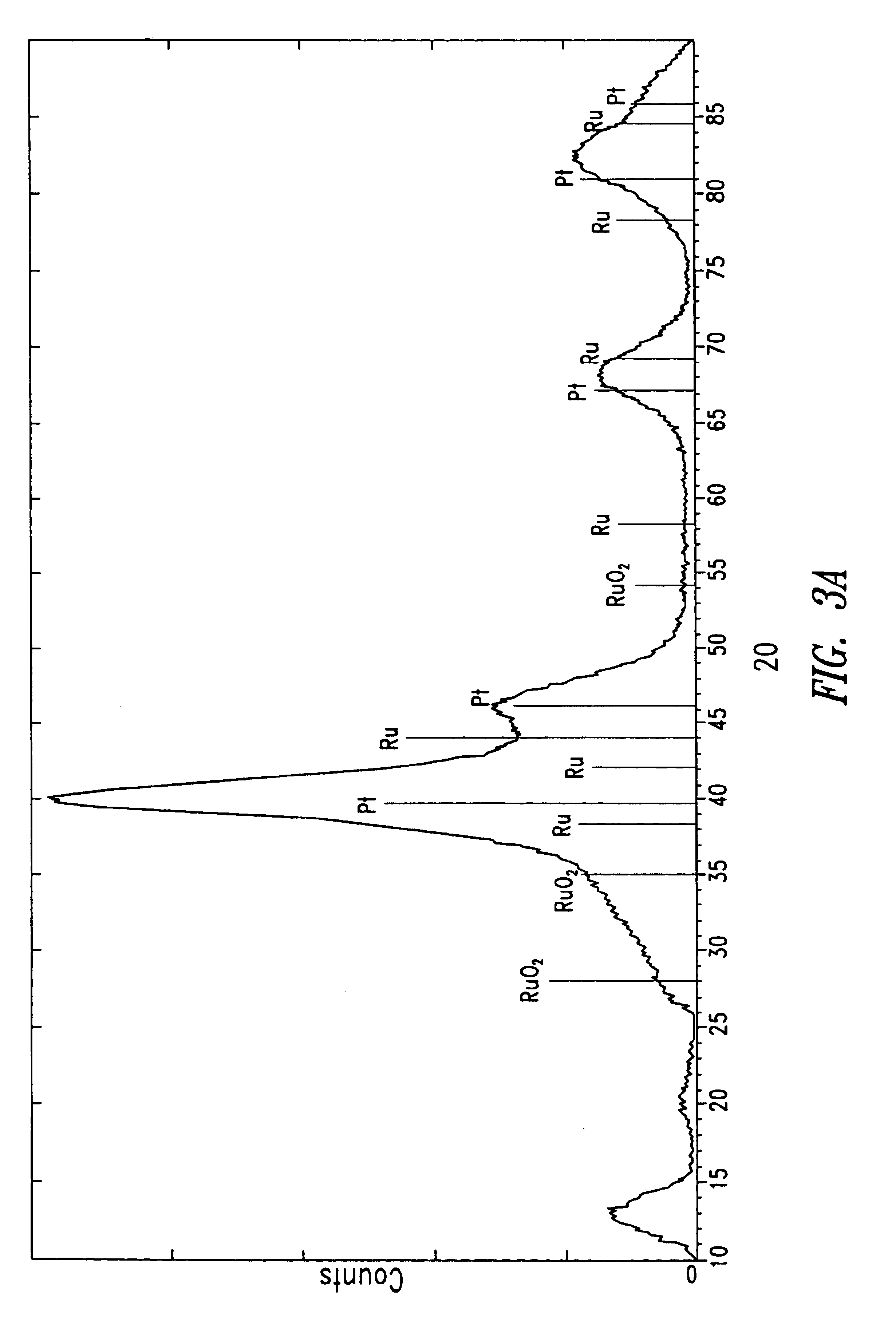Solid polymer fuel cell with improved voltage reversal tolerance
a solid polymer fuel cell and voltage reversal tolerance technology, applied in secondary cell servicing/maintenance, cell components, electrochemical generators, etc., can solve the problems of oxidation (corrosion) of anode components, degradation of certain components in the affected fuel cell, and damage to the anod
- Summary
- Abstract
- Description
- Claims
- Application Information
AI Technical Summary
Benefits of technology
Problems solved by technology
Method used
Image
Examples
examples
[0058]A series of catalyst samples were prepared in order to evaluate ex-situ oxygen evolution performance to compare their potential ability to improve anode tolerance during voltage reversal in a fuel cell. The catalyst compositions were prepared on carbon supports as indicated below.
[0059]The catalyst samples prepared were:[0060]C1: Pt / Ru alloy supported on Shawinigan acetylene black (from Chevron Chemical Company, Texas, USA), nominally 20% Pt / 10% Ru by weight (the remainder being carbon);[0061]C2: Pt / Ru alloy supported on Vulcan XC72R grade furnace black (from Cabot Carbon Ltd., South Wirral, UK), nominally 20% Pt / 10% Ru by weight;[0062]C3: Pt / Ru alloy and RuO2 supported on Shawinigan acetylene black, nominally 16% Pt / 8% Ru (as alloy) / 20% Ru (as RuO2) by weight;[0063]C4: Pt / Ru alloy and RuO2 supported on Vulcan XC72R grade furnace black, nominally 16% Pt / 8% Ru (as alloy) / 20% Ru (as RuO2) by weight;[0064]C5: Pt / Ru alloy and RuO2 supported on graphitized Vulcan XC72R grade furnac...
PUM
 Login to View More
Login to View More Abstract
Description
Claims
Application Information
 Login to View More
Login to View More - R&D
- Intellectual Property
- Life Sciences
- Materials
- Tech Scout
- Unparalleled Data Quality
- Higher Quality Content
- 60% Fewer Hallucinations
Browse by: Latest US Patents, China's latest patents, Technical Efficacy Thesaurus, Application Domain, Technology Topic, Popular Technical Reports.
© 2025 PatSnap. All rights reserved.Legal|Privacy policy|Modern Slavery Act Transparency Statement|Sitemap|About US| Contact US: help@patsnap.com



